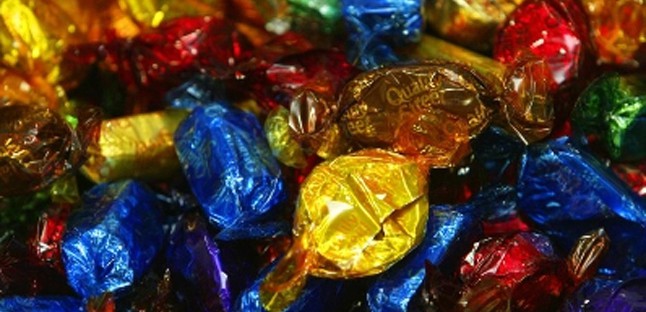Latest posts
What’s going on at parkrun?
Virtue-signalling all the way to the bank
Bud Light: brand purpose or virtue-signalling?
The Coddling of the American Mind, by Greg Lukianoff and Jonathan Haidt
Belonging, by Owen Eastwood
Such a simple thing
The Long Win, and The Scout Mindset
The Cult of We by Eliot Brown and Maureen Farrell
Coffee and covid modelling
John Lewis: so right-on it’s wrong
By theme
Marketing strategy
Insight & metrics
Innovation & inspiration
Brand & positioning
Marketing communications
Business purpose
Leadership
By industry sector
Financial services
Retail
FMCG
Technology & start-ups
Consumer services
Business to business
Other sectors
By type
Books
Comment
Quotes
Thought leadership
What do you think when you hear the name Quality Street? What do you feel? If you’ve grown up in the British Isles, it’s part of Christmas, though you probably forget about it all the rest of the year. But it’s a case study in brand longevity, with some surprising lessons for brand managers today.
- There’s no need to obsess about a name
Was there ever a more mundane brand name than Quality Street? It’s not even original – it was copied from a J.M. Barrie play that was big at the time, now long forgotten. All the rich associations and warm feelings now conjured up by those two words are nothing to do with a clever name or even with persuasive advertising. A name can be a shortcut to meaning but it won’t compensate for lack of meaning. Our brand associations build over time, so a name may be a signal but it’s no substitute for substance in the product. Of course, a name can be actively unhelpful – the Nova car seemingly wasn’t that appealing to the world’s 400 million Spanish speakers. But once you have established a name, even an indifferent one, you change it at your peril, because sometimes it doesn’t go too well.
- Packaging can be as important as product
Packaging can be part of the product. The first breakthrough of the Mackintosh family business was a product innovation, when Violet Mackintosh mixed brittle butterscotch with runny caramel to make a new kind of toffee. She and her husband John did well. By the time their son Harold took over in the 1930s, Mackintoshes was an international toffee and chocolate business. At that time, chocolates came in expensive boxes, with prices to match. Harold had the idea of wrapping individual sweets in coloured paper instead of laying them out in a fancy tray. Cheaper packaging made chocolates affordable to many more people, creating a virtuous circle of production and distribution efficiency. He even invented a paper twist wrapping machine to automate the process.
- Consumers make the brand
Now you know that the exciting burst of colour which promises so much as the lid comes off came from a cost reduction effort, not some marketing brainstorm. The enjoyable, noisy rituals of rummaging through the tin and unwrapping the little beauties have grown over time to be part of the pleasure, but these too came about largely by chance. Family battles over favourites, whether empty wrappers go back in the tin (NO!) and when to pass the tin – consumers, not marketing people, have made those connections with Quality Street.
- Nostalgia doesn’t have to stymie innovation
I’d be shocked if they took away the toffee penny, and I don’t even like it. It feels like the heart of Quality Street. But there has been plenty of innovation over the years. Inspired by consumer language, the Big Purple One and the Green Triangle now exist as giant individual sweets and a chocolate bar. Other flavours have been swapped in and out, sometimes to the dismay of consumers. At one stage people complained there were too many toffees, then complained again when one of them was replaced with something different. Look how the brand team responded: they listened and put it back. (This is also a reminder that listening to customers is not the same as taking instruction from them.) As of 2018 you can buy a personalised selection with your name on the tin. Other packaging changes have been driven by cost or sustainability, such as separating the sweet wrappers into foil and paper for easier recycling.
Quality Street is such an institution that changes in the mix can provoke outrage, and polls have been conducted to determine which are the best. We don’t all have the luxury of a brand built on a lifetime of quiet reliability with some serendipitous decisions thrown in. But we can all make sure we know what people feel about the product and the brand, how they use it, what it means to them, how it fits into their lives. That understanding can unlock great potential.
Latest posts
What’s going on at parkrun?
Virtue-signalling all the way to the bank
Bud Light: brand purpose or virtue-signalling?
The Coddling of the American Mind, by Greg Lukianoff and Jonathan Haidt
Belonging, by Owen Eastwood
Such a simple thing
The Long Win, and The Scout Mindset
The Cult of We by Eliot Brown and Maureen Farrell
Coffee and covid modelling
John Lewis: so right-on it’s wrong
By theme
Marketing strategy
Insight & metrics
Innovation & inspiration
Brand & positioning
Marketing communications
Business purpose
Leadership
By industry sector
Financial services
Retail
FMCG
Technology & start-ups
Consumer services
Business to business
Other sectors
By type
Books
Comment
Quotes
Thought leadership
